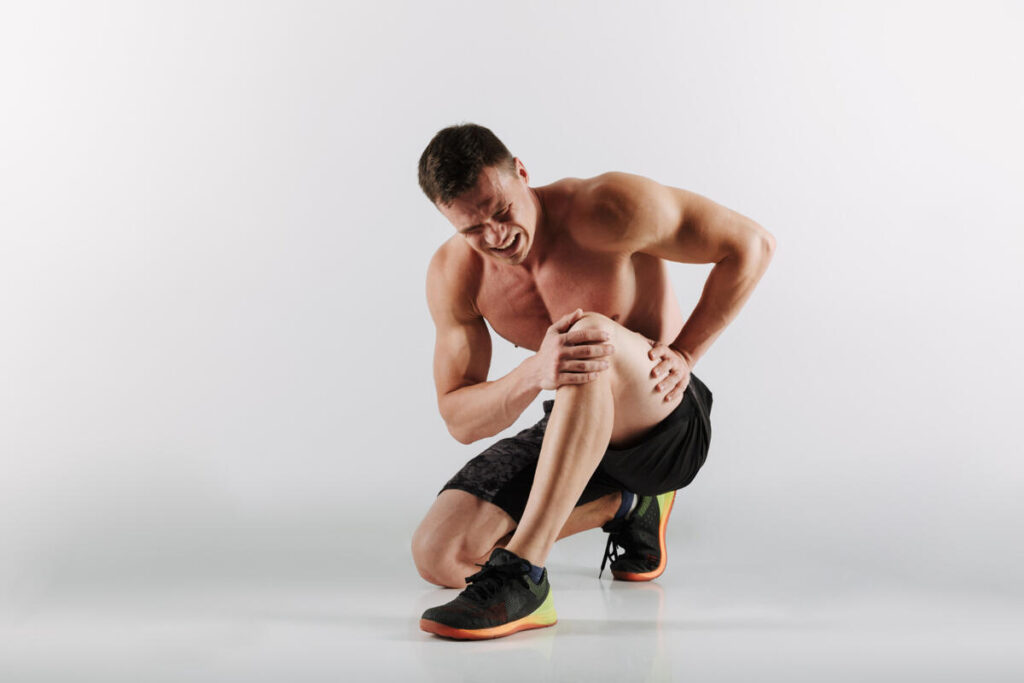Set out on a quest to achieve the highest levels of strength and muscle growth as we study plyometrics and world fitness. Plyometrics, also known as “jump training” or “plyos,” is a form of exercise that involves rapid contraction and extension of muscles, often characterized by explosive and dynamic movements. Plyometric workout programs are specially prepared to increase the strength and efficiency, flexibility, which is ultimately improve muscular endurance and volume and overall athletic performance. This blog is your go-to guide for including dynamic and explosive exercises into your routine, unlocking the potential of Plyometric Exercises to Build Muscle and increased muscular strength.
Table of Contents
ToggleHere are Key Characteristics of Plyometric Workouts
Quick, Explosive Movements: Plyometric exercises involve rapid and powerful contractions of muscles. This helps in developing the ability to generate maximum force in a short amount of time.
Muscle Stretch and Contraction: Plyometrics typically involve a quick stretch (eccentric phase) of a muscle immediately followed by a rapid contraction (concentric phase). The term “stretch-shortening cycle” refers to this quick change in muscle length from length to shortening.
Bodyweight Exercises: Many plyometric exercises use the body’s own weight for resistance. Common movements include jumps, hops, and bounds.
Lower and Upper Body Integration: While plyometrics are often associated with lower body exercises like jumps and hops, they can also include upper body movements such as medicine ball throws or clapping push-ups.
Increased Musculoskeletal Coordination: By exercise the plyometrics workout to properly activate many muscle fibres in body and also plyometric training improves musculoskeletal connection. This coordination is crucial for athletic activities that require quick and precise movements.
Plyometric Boxes and Platforms: Some plyometric exercises involve jumping onto or over boxes or platforms of varying heights. An individual may use these special boxes and platforms to hit different-different muscle groups and these accessories can enhance the intensity of your workout.
Plyometric and Different Health Conditions

It’s important to note that plyometric training can be intense and may not be suitable for everyone, especially those with certain medical conditions (High BP, Heart Issue, Artiritis, dibetic) or injuries. Beginners should start with foundational strength and gradually incorporate plyometrics into their workout routine under proper supervision. Additionally, warming up and proper technique are crucial to minimize the risk of injury during plyometric exercises.
Beginners and Novices:
Plyometric exercises involve explosive movements that put significant stress on muscles and joints. Beginners should establish a foundational level of strength and conditioning before incorporating plyometrics to reduce the risk of injury.
Individuals with Joint Issues or Injuries:
Plyometric movements, especially those involving jumps and landings, can place stress on the joints. Avoid these plyometric workouts If you’ve had any kind of joint problems or and bones related illness. You might need to adjust or skip specific plyometric exercises to avoid the risk of additional injury.
Overweight or Obese Individuals:
Plyometrics involve a high impact on the joints, and individuals carrying excess weight may be at a higher risk of injury. It’s advisable for overweight or obese individuals to focus on low-impact exercises initially and consult with a fitness professional or healthcare provider before attempting plyometrics.
Individuals Recovering from Surgery:
Those recovering from recent surgeries, especially orthopaedic surgeries, should avoid high-impact exercises until they receive clearance from their healthcare provider. Plyometrics may place undue stress on healing tissues and impede the recovery process.
Pregnant Women:
High-impact activities should be avoided by pregnant women since pregnancy produces significant changes to the body. Consultation with a healthcare provider is crucial to determine which exercises are safe and suitable for the individual’s pregnancy stage.
People with Cardiovascular Conditions:
Plyometric exercises can significantly elevate heart rate and blood pressure. Before beginning high-intensity plyometric training, any individual with cardiovascular problems, such as hypertension or heart disease, should consult with a specialist doctor.
Elderly Individuals:
Plyometrics may not be suitable for older adults, especially those with balance issues or reduced bone density. Older individuals should focus on exercises that enhance strength and balance without excessive impact on the joints.
Those with Chronic Health Conditions:
Individuals with chronic conditions such as arthritis, osteoporosis, or diabetes should approach plyometric training with caution. Modifications may be necessary, and medical advice should be sought before starting a plyometric program.
List of Best 6 Plyometric Exercises to Build Muscle
Let’s dive into the six best plyometric exercises that will not only challenge your limits but also redefine your fitness journey and help you to Build Muscle and strength
Box Jumps: Elevate Your Power
Description: Box jumps are the quintessential plyometric exercise, demanding explosive strength from your lower body. Leap onto a sturdy box or platform, ensuring a soft landing to absorb the impact. The height of the box can be adjusted based on your fitness level, making it a versatile choice for beginners and seasoned athletes alike.
Depth Jumps: Defying Gravity for Maximum Impact
Description: Introduce your muscles to the stretch-shortening cycle with depth jumps. Step off a platform and immediately explode into a vertical or horizontal jump upon landing. This exercise challenges your muscles to rapidly transition from eccentric to concentric contraction, promoting power and coordination.
Jump Squats: Squatting to New Heights
Description: Transform your traditional squats into a dynamic powerhouse by incorporating jump squats. As you descend into the squat position, explode upward into a jump, engaging your entire lower body and core. This exercise not only builds strength but also enhances cardiovascular fitness.
Burpees: Full-Body Explosion
Description: Burpees are the ultimate full-body plyometric exercise. Begin with a squat, kick your feet back into a plank position, execute a push-up, bring your feet back to the squat position, and finish with an explosive jump. This high-intensity movement targets multiple muscle groups, providing a comprehensive workout in a single exercise.
Medicine Ball Slams: Unleash Your Core Power
Description: Grab a medicine ball and channel your inner strength with medicine ball slams. Lift the ball overhead and forcefully slam it to the ground, engaging your core, shoulders, and arms. The rapid contraction and release of the ball amplify the intensity, making it an excellent plyometric exercise for building muscle and explosive power.
Tuck Jumps: Elevate Your Plyometric Prowess
Description: Elevate your plyometric game with tuck jumps. Begin by jumping vertically, bringing your knees toward your chest in a tucked position. This exercise not only targets your lower body but also challenges your core and improves overall agility. The compact, explosive movement is a key player in enhancing your vertical leap.
Conclusion
Adding these six powerful plyometrics to your workout is a great method to boost your overall strength and specially designed these Plyometric Exercises to Build Muscle. Make sure to begin at a fitness level that suits you, pay attention to your form, and slowly amp up the difficulty. Whether you’re someone who loves staying active or an athlete aiming for better performance, these dynamic exercises will push you closer to your fitness goals with every energetic jump. Get set to push you ur boundaries and see how plyometrics can transform your fitness journey!
Reference
ncbi.nlm.nih.gov




